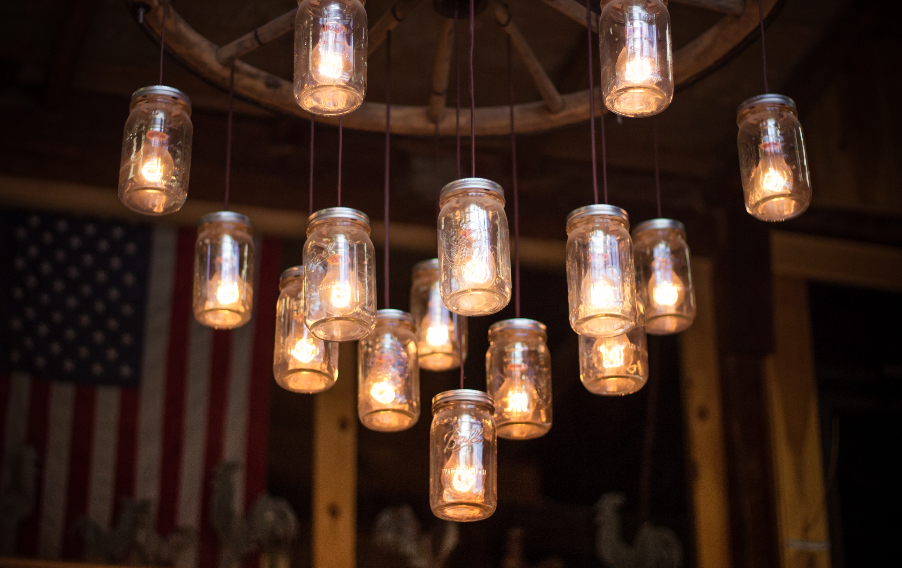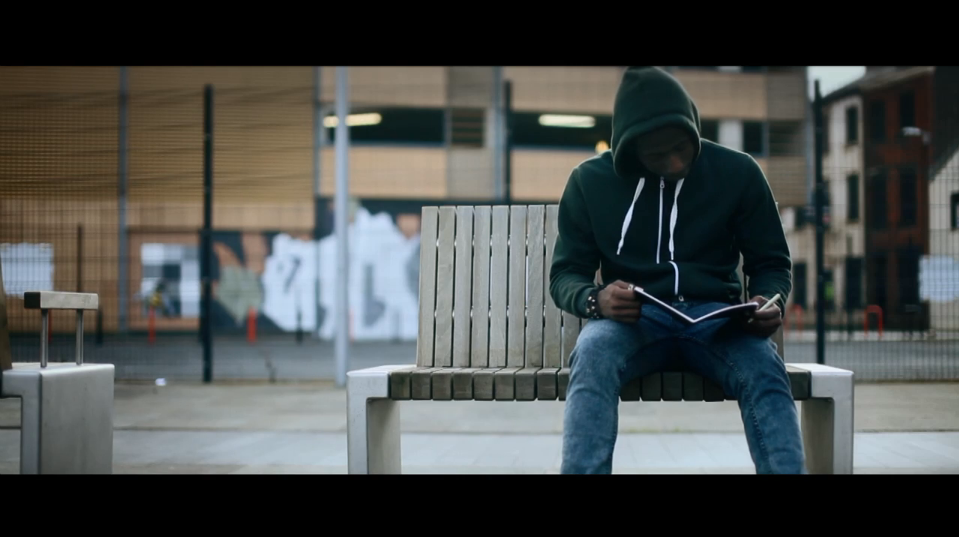Hands down, one of the best changes I’ve ever made whilst living in rented accommodation has been swapping out the existing light bulbs for daylight ones. The difference it makes is huge.
STANDARD DOMESTIC LIGHTS ACTUALLY EMIT A VERY YELLOW KIND OF LIGHT.
In fact, we don’t often notice how yellow it is because we’re so used to it.[1] This is fine for a bedside lamp for reading before bed; it is in effect mimicking the setting sun (2700 kelvin) and therefore instigates the chemical changes in the body that prepare us for sleep.[2] However, as a home’s predominant source of light all day, every day, it has the potential to become a hindrance, causing body clock conflict and grogginess without us even realising.
Admittedly, most of us don’t have our house lights on all day in the summer, so this is less of an issue. However, during the winter, lower light levels means we rely more heavily on artificial light to supplement our day. As such, our exposure to non-optimal light goes up, and our exposure to the daylight locus effect, which triggers those key sleep-wake cycles, goes down.
THAT THIS HAS AN EFFECT IS BORNE OUT BY SCIENTIFIC RESEARCH.
Seasonal Affective Disorder (SAD) is now a widely acknowledged concept for humans, with a higher incidence rate in countries whose winter climate has reduced sunshine hours.[3] Indeed, winter blues has long been part of our lexicon. Whilst we may enjoy the thought of a crackling fire or the cuddling up with a hot drink that the turn of the season brings, the thought of the nights drawing in results in considerably less enthusiasm for most of us.
Looking to the animal kingdom, low light levels coupled with low temperatures induce hibernation in many species.
SO WHY DAYLIGHT LIGHTBULBS?
Daylight lightbulbs have a colour temperature that mimicks natural sunlight (6500 kelvin), offering the all important white ‘daylight’ light we need to function and feel alert. Even if winter means shorter days, daylight bulbs can go a good way to help offset some of that groggy feeling.
DAYLIGHT LIGHBULBS ARE USUALLY GREENER TOO.
Daylight lightbulbs are available in a number of eco forms. Yes, this means they cost marginally more up front, but they’re cheaper to run and usually last longer too.
Most of us are familiar with the term watts or wattage of a light bulb e.g. 40w, 60w etc. However, this is a measure of power consumption, not specifically how bright the bulb is, which is actually measured in lumens. With old lightbulbs, 40w was a standard domestic bulb consumption and emitted around 400 lumens, whilst a 60w emitted around 700 lumens.[4] However, it’s now common for an eco bulb to emit substantially more lumens e.g. 1500 for 14W. This means less power consumption, and smaller electricity bills.
So, healthier, cheaper, more efficient. What’s not to love?
Photo by Bonnie Kittle on Unsplash
[1] Our eyes and brains are incredibly good at compensating for this. If you’ve ever taken a photo indoors under artificial light without the white balance compensation enabled in camera, the result is an icky yellowish image. However, for humans, even though the ambient light may heavily tint the surroundings, our brains recalibrate the data so we still perceive a piece of paper, or a wall, as white and don’t get confused.
[2] And it’s why devices such as tablets and phones now offer a night mode screen with a yellow tint.
[3] SAD’s prevalence in the U.S. ranges from 1.4% in Florida to 9.9% in Alaska.
Nolen-Hoeksema, Susan (2014). Abnormal Psychology (6th ed.). New York, New York: McGraw-Hill Education. p. 179
[4] https://www.lightbulbs-direct.com/article/lumens/




